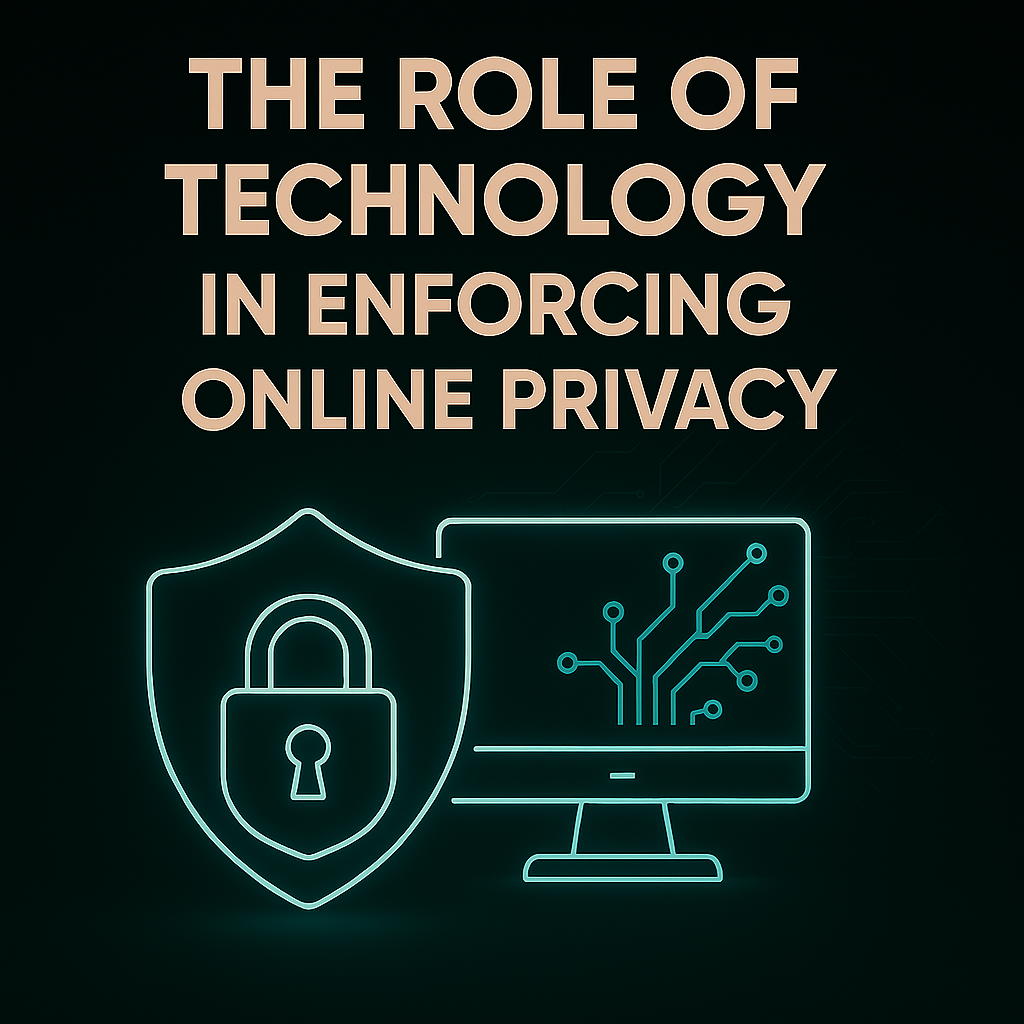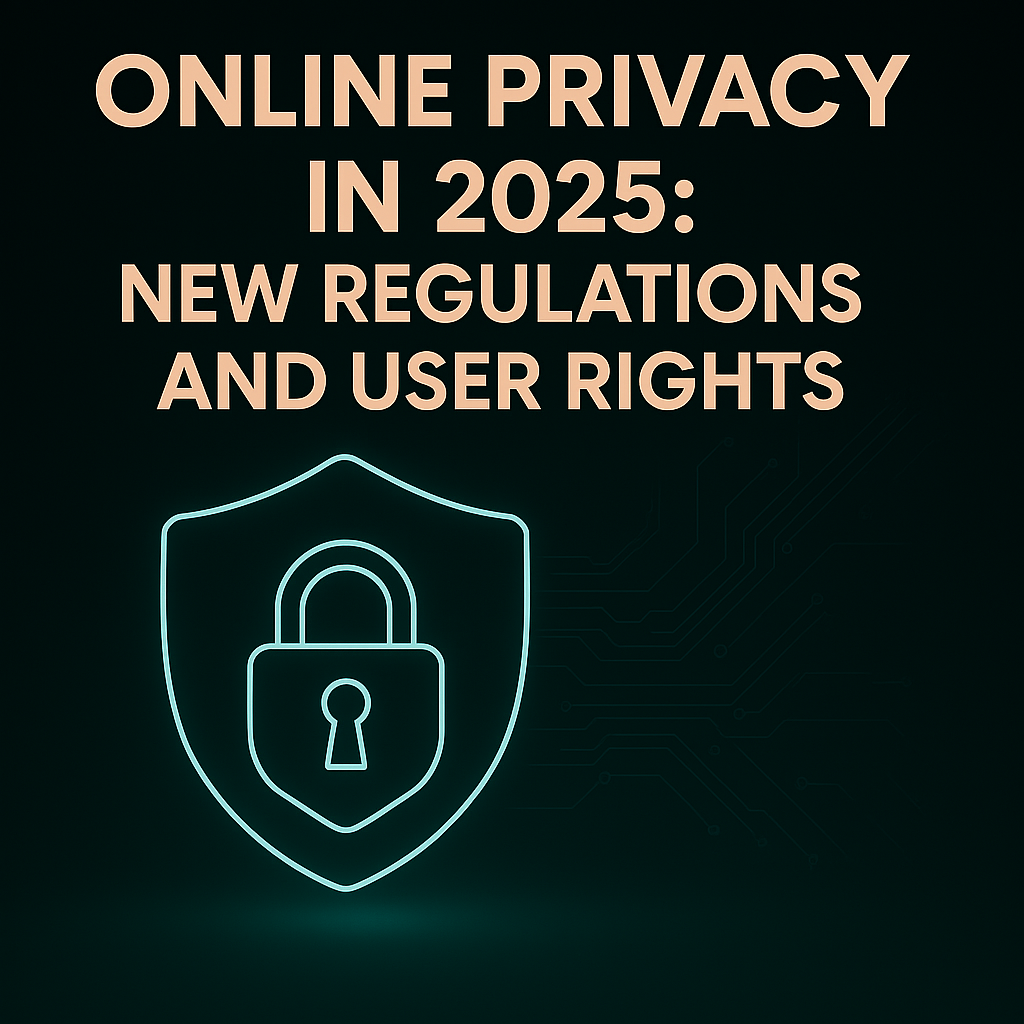In the digital era, personal information has become both a precious commodity and an integral part of our daily lives. As our dependence on technology and online services increases, so does our need for robust privacy measures. In 2025, the landscape of online privacy is evolving rapidly. New regulations are emerging, reshaping the way data is collected, stored, and used, while users are demanding greater control over their personal information. In this article, we explore the key changes in online privacy regulations, how these changes are affecting businesses and consumers, and what steps you can take to ensure that your digital rights remain protected.
The Digital Privacy Revolution
The concept of online privacy is not new, but the challenges associated with it have grown exponentially in recent years. With adverse data leaks, frequent cyber attacks, and continuous media coverage of corporate missteps, the call for reform has never been louder. Users are not only more aware of the potential risks, but they are also demanding transparency and accountability from the companies that handle their data.
From Reaction to Regulation
Over the past decade, most governments around the world have moved from reactive policies to proactive, comprehensive privacy regulations. Landmark regulations such as the EU’s GDPR (General Data Protection Regulation) and the California Consumer Privacy Act (CCPA) set the stage by emphasizing transparency, user consent, and accountability. Now, in 2025, we are witnessing the next phase—an era marked by new legislative frameworks and stricter enforcement that aim to balance innovation with the right to privacy.
Why Privacy Matters More Than Ever
Online privacy is crucial because it:
- Protects personal and sensitive information from unauthorized access.
- Empowers users to control who sees their data and how it’s used.
- Reduces the risk of financial and identity theft.
- Bolsters trust between consumers and businesses.
As technology advances and data becomes more integrated into every facet of our lives, ensuring online privacy is a pivotal part of safeguarding our future.
2025: A New Era of Privacy Regulations

Regulators worldwide have recognized the need for more comprehensive data protection laws. As we move deeper into 2025, several key trends in privacy regulations have emerged.
1. Expansion of Global Regulatory Frameworks
Governments across different continents are refining and expanding existing laws with the aim of creating a more unified global approach to online privacy. For instance:
- EU’s Enhanced GDPR: The European Union has introduced additional amendments to the GDPR, tightening rules on how companies store and process biometric data, health records, and even behavioral data. The enhancements demand more transparency from corporations and provide users with newly empowered rights to request more detailed logs of data handling.
- North American Developments: In the United States and Canada, privacy advocates and lawmakers are working together to develop frameworks that go beyond state-specific laws like the CCPA. National-level initiatives aim to set uniform standards for data protection, with an emphasis on user consent and redress mechanisms for data misuse.
- Asia-Pacific Innovations: Countries in the Asia-Pacific region are following suit with their own versions of comprehensive privacy regulations. Nations such as Australia, Japan, and South Korea have revised their privacy laws to accommodate the heightened use of artificial intelligence and big data while protecting individual rights.
2. User Rights Are Strengthened
One of the most significant changes in 2025 is the reinforcement of individual user rights. These new rights ensure that users have a stronger, more transparent relationship with companies that handle their personal data.
- Right to Data Portability: Users can now effortlessly transfer their data from one service to another. This helps foster competition among service providers and empowers consumers to choose platforms that best serve their needs.
- Right to Deletion (The “Right to Be Forgotten”): New regulations make it simpler for individuals to request that their personal data be permanently deleted from corporate databases, effectively reducing the risk of long-term data exposure.
- Right to Informed Consent: Companies must now provide clear, easily understandable explanations of how data is collected and used. Consent requests are required to be more granular, letting users opt in or out of specific data collection practices.
- Right to Audit Data Use: Users may now request that companies perform regular audits detailing where and how their data is being used. This transparency not only builds trust but also encourages companies to adopt stricter security measures.
3. Enforcement and Penalties
Stricter enforcement of data protection laws is a prominent trend. Regulatory authorities have been provided with greater power to conduct audits, investigate breaches, and impose substantial fines.
- Increased Fines for Non-Compliance: Companies found in violation of stringent privacy standards now face significantly higher fines. For major corporations, these penalties can reach billions of dollars.
- Mandatory Breach Notifications: New regulations require organizations to disclose data breaches within a specific timeframe. Failure to comply now results in severe fines and reputational damage.
- Regular Data Protection Audits: Businesses must undergo periodic independent audits to verify that their data practices comply with the latest privacy norms. These audits reassure users that their personal information is being handled responsibly.
How These Regulations Impact Businesses and Consumers
The new privacy regulations are not just about government oversight—they have a profound impact on both the business world and everyday users. Let’s take a closer look at what these changes mean.
For Businesses
1. Increased Accountability and Transparency
Companies must adapt quickly to ensure they remain compliant in this new landscape. This means overhauling data storage practices, investing in cybersecurity measures, and establishing clear procedures for obtaining user consent. Failure to do so not only risks hefty fines but also seriously damages brand reputation.
- Investment in Cybersecurity: With the possibility of more rigorous audits and harsher penalties for data breaches, businesses are stepping up their investment in cybersecurity. This includes employing advanced encryption techniques, continuously monitoring network activity, and training staff on best practices for data handling.
- Revamped Privacy Policies: Companies are rewriting privacy policies to contain transparent language that resonates with users. These policies now detail every aspect of data usage, including third-party sharing, retention periods, and methods for users to exercise their rights.
- Data Minimization Principles: Businesses are increasingly adopting data minimization techniques—collecting only the data absolutely necessary for operation. This not only alleviates compliance pressure but also reduces the risk of data exposure in a breach scenario.
2. Competitive Advantage Through Trust
Privacy is becoming a significant competitive factor. Organizations that prioritize data protection and openly communicate their privacy practices establish greater trust with customers.
- Building Brand Loyalty: Transparent data practices and a commitment to user rights foster trust, leading to increased customer loyalty and positive brand perception. In an age where data privacy is at the forefront of consumer concerns, companies that get it right can use privacy as a unique selling proposition.
- Differentiation in the Market: Businesses that emphasize strong data protection are likely to attract privacy-aware consumers. As user rights become clearer and easier to enforce, companies with robust privacy measures will stand out amid regulatory pressure.
For Consumers
1. Enhanced Control Over Personal Data
The new regulations empower consumers like never before. By taking advantage of these rights, users can gain greater insight into how their data is processed and even revoke permissions if they feel uncomfortable.
- Transparency in Tracking: Consumers now have more visibility into which companies are tracking their activities and to what extent. Detailed data logs provided on request enable users to understand and challenge suspicious data practices.
- More Informed Choices: With clear labels on data collection practices and explicit consent mechanisms, consumers are better equipped to make choices that align with their privacy preferences. This results in a more personalized online experience where users can decide what is shared and what is kept private.
2. Improved Data Security and Reduced Privacy Risks
Stricter regulations and increased fines have compelled companies to adopt better security practices, thereby reducing the likelihood of significant data breaches that could compromise sensitive personal information.
- Proactive Breach Management: With mandatory breach notifications and regular audits, consumers can expect quicker responses and better support in case their data is impacted. More rigorous enforcement helps ensure vulnerable data is protected against malicious breaches.
- Peace of Mind in Daily Interactions: With improved privacy controls, whether you’re shopping online, using social media, or managing your finances digitally, you can have peace of mind that your personal information is being handled securely.
The Role of Technology in Enforcing Online Privacy

While regulations provide the legal framework needed to protect privacy, technology is the tool that makes compliance possible. Here are some key technological trends shaping the enforcement of online privacy in 2025.
1. Advanced Encryption Techniques
At the backbone of data security is encryption. Modern encryption methods have evolved beyond simple algorithms to include sophisticated, quantum-resistant technologies that ensure even the most sensitive data remains protected.
- End-to-End Encryption: This method guarantees that messages and data are only accessible by the sender and intended recipient. It’s now widely used in messaging apps and data transfer protocols.
- Homomorphic Encryption: Such advanced techniques allow data to be processed in an encrypted state—meaning that even if data leaks occur, the information is indecipherable to unauthorized parties.
2. Artificial Intelligence and Machine Learning
AI and machine learning (ML) are being harnessed to monitor, detect, and mitigate data privacy breaches in real time. These technologies analyze vast data flows, detect anomalies, and automatically trigger protective measures.
- Predictive Analytics for Breach Prevention: By analyzing patterns of network behavior, AI systems can predict potential breaches before they occur, ensuring proactive measures are taken.
- Automated Compliance Tools: ML algorithms simplify the task of auditing and maintaining compliance by automatically identifying, flagging, and even correcting non-compliant data practices.
- Enhanced User Consent Models: AI can tailor consent dialogues to individual users, ensuring that privacy requests are not only clear but also customized to user behavior, offering a deeper level of personalization in privacy management.
3. Blockchain and Decentralization
Decentralized technologies such as blockchain provide alternatives for data storage and sharing that are inherently transparent and secure. Blockchain-based platforms ensure that user data is stored in a tamper-evident manner, where each transaction is recorded on an immutable ledger.
- User-Controlled Data Repositories: With blockchain, users can maintain control over their personal data, granting access only when necessary and tracking every interaction.
- Smart Contracts for Data Access: These automated contracts ensure that data is only accessed under predefined and verifiable conditions, increasing accountability and reducing the risk of unauthorized use.
How to Protect Your Online Privacy in 2025
With all these evolving regulations and technological innovations, what can individual users do to protect their online privacy? Whether you’re a savvy internet user or just beginning to understand the value of data protection, here are some actionable steps you can take:
1. Stay Informed about Your Rights
Knowledge is power when it comes to online privacy:
- Read and Understand Privacy Policies: Although often lengthy, taking the time to read privacy policies can give you insights into what data is collected and how it is used.
- Monitor Regulatory Updates: Stay informed about updates to privacy laws such as GDPR, CCPA, and similar regulations in your region. This awareness helps you know when to exercise your rights.
- Join Privacy Forums and Communities: Online communities and forums dedicated to digital privacy can be excellent sources of practical advice and the latest news on privacy protection strategies.
2. Use Privacy-Enhancing Tools
There are many tools at your disposal to limit data tracking and safeguard your online identity:
- VPNs (Virtual Private Networks): A reputable VPN service can mask your IP address, encrypt your internet traffic, and provide you with an extra layer of anonymity.
- Ad and Tracker Blockers: Browser extensions and privacy-focused search engines reduce unwanted data collection by preventing tracking scripts from running.
- Encrypted Messaging Services: Choose communication platforms that prioritize end-to-end encryption to ensure that your personal conversations remain private.
3. Regularly Review Your Digital Footprint
Your online privacy extends across your digital life. Regular checks can help you maintain control:
- Audit Your Social Media Settings: Regularly update privacy settings on social media platforms to minimize sharing of personal information.
- Check Data Permissions: Periodically review and revoke unnecessary permissions given to apps and services on your devices.
- Request Data Portability and Deletion: Take advantage of your rights by requesting copies of your personal data or having it permanently deleted where possible.
4. Advocate for Your Privacy Rights
Beyond personal measures, advocacy plays a crucial role in shaping our digital rights landscape:
- Support Privacy-Friendly Legislation: Get involved in campaigns and initiatives that promote strong data protection laws.
- Choose Brands That Respect Your Privacy: Support businesses that are transparent about their data practices and treat your personal information with respect.
- Education and Awareness: Share privacy tips and educate friends, family, and colleagues about the importance of protecting their digital identities.
The Future of Online Privacy: Trends to Watch

As 2025 continues to unfold, several trends promise to further reshape the realm of online privacy, ensuring that regulatory frameworks and technological innovations go hand in hand.
1. Emotionally Intelligent Privacy Interfaces
Future privacy tools may soon incorporate artificial intelligence not just to secure your data, but to understand your unique privacy preferences. Personalized privacy dashboards could analyze your behavior and automatically adjust settings to suit your particular needs.
- Adaptive Consent Models: Interfaces that learn from your interactions and tailor consent requests so that you receive relevant, timely notifications about data use.
- Interactive Privacy Settings: Gamified or user-friendly interfaces that make managing digital privacy more engaging and less of a chore.
2. Increased Focus on Decentralization
The trend toward decentralization is expected to gain momentum:
- Decentralized Data Storage: More platforms will likely transition to blockchain or other distributed ledger technologies to give users even greater control over their data.
- Peer-to-Peer Privacy Networks: Communities may form around shared data protocols that exclude centralized control, ensuring that your information is not stored on a single, vulnerable server.
3. Privacy as a Service (PaaS)
The market for privacy-enhancing services is expanding rapidly:
- Subscription Models for Digital Safety: Expect to see more comprehensive, subscription-based services that provide personalized privacy consulting, monitoring, and automated defenses.
- Enterprise-Level Privacy Tools for Consumers: Leading companies might adopt consumer-friendly versions of their enterprise data security solutions, making top-tier protection available to everyday users.
4. Balancing Innovation with Privacy
As technology marches forward, a key challenge will be ensuring that innovative digital products do not come at the expense of privacy:
- AI-Driven User Protections: Advanced systems that allow for technological innovation while monitoring for potential privacy violations in real time.
- Global Standards for Data Ethics: Continued discussions among international regulators to create universal standards that both foster innovation and protect individual rights.
Challenges and Opportunities Ahead
While the future of online privacy in 2025 is promising, it is not without challenges. The rapid pace of innovation means that regulatory frameworks must continuously evolve to keep pace with emerging threats.
Challenges
- Complexity of Global Regulation: With multiple jurisdictions each enforcing their own standards, businesses face the challenge of adapting to a complex, sometimes contradictory, patchwork of rules.
- Rapid Technological Change: As new technologies emerge, it can be difficult for lawmakers to draft regulations that are both comprehensive and flexible enough to account for future innovations.
- Privacy vs. Utility Trade-Offs: Some advancements in technology rely on data sharing and analytics. Striking the right balance between useful innovation and privacy protection continues to be a contentious issue.
Opportunities
- Empowered Consumers: With stronger privacy rights, consumers now have the opportunity to dictate how their data is used, ultimately influencing how technology evolves.
- Innovation in Privacy-Enhancing Technologies: There is significant room for growth in AI, blockchain, and other emerging technologies that can offer robust solutions to today’s privacy concerns.
- Collaborative Frameworks: As governments, businesses, and consumers become more aware of privacy issues, there is a rising trend toward collaborative solutions that benefit all stakeholders.
Conclusion: A Future Where Privacy Empowers Innovation and Freedom
Online privacy in 2025 is undergoing a transformative shift. New regulations prioritize transparency, user rights, and accountability in an increasingly digital world. With strengthened user rights, companies are compelled to build trust while embracing innovative, privacy-first technologies. Consumers now benefit from greater control, safer digital environments, and tools that empower them to navigate an increasingly complex data ecosystem.
The successes of the past years have paved the way for a future where privacy is not a barrier to innovation but a foundation upon which it can flourish. As new challenges arise, a united global effort involving policymakers, businesses, and individual users is essential to ensure that our digital rights remain robust and adaptive.
By staying informed, using privacy-enhancing tools, and advocating for stronger protections, you have an active role in shaping this future. The days of data exploitation are gradually declining as we move toward a more secure, just, and transparent digital landscape.
Embrace the promise of tomorrow—where every click, every login, and every transaction respects your right to privacy. In 2025 and beyond, the future is built on the premise that innovation and privacy not only coexist but thrive together.



